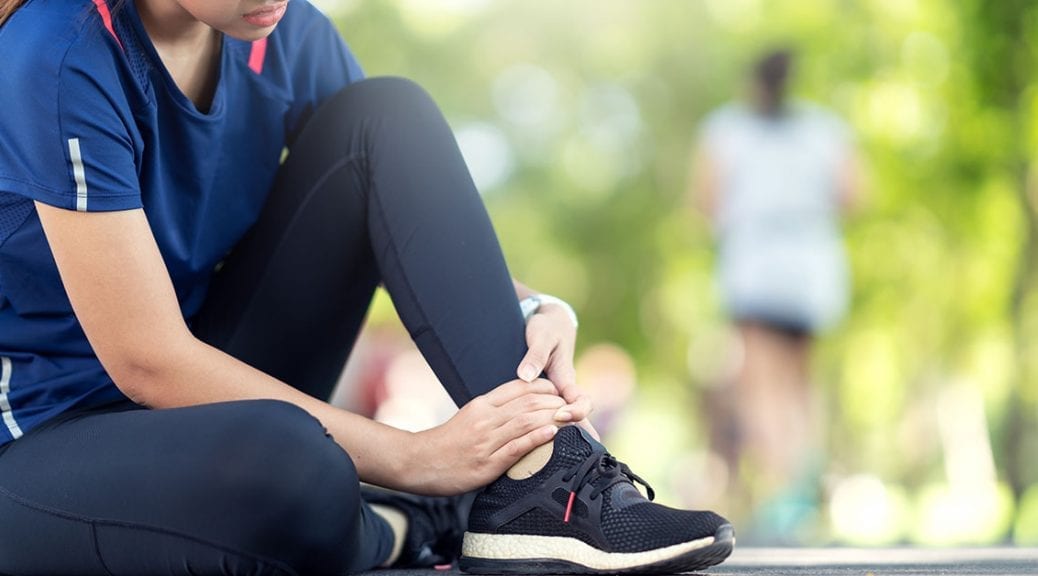Strains and sprains are both common orthopedic injuries. However, many people do not know that there is a difference between the two. The difference between sprains and strains comes down to the part of the musculoskeletal system affected. Sprains affect ligaments while strains affect muscles and tendons.
The Basics
A sprain is an injury to a ligament. Ligaments are tissues that connect two or more bones to a joint. Sprains occur when one or more ligaments are stretched or torn. The severity of a sprain injury depends on how badly the ligament is damaged and how many ligaments are involved in the injury. Sprains can occur at any joint in the body, but according to the National Institute of Arthritis and Musculoskeletal and Skin Diseases (NIAMS), ankle sprains are the most common type of sprain.
A strain is an injury to a muscle or tendon. Tendons are the fibrous cords of tissue that connect your muscles to your bones. Strains can range in severity from a mild overstretch to a complete tear. Strains can happen suddenly (acute muscle strains) or develop over time from repetitive movements or positions (chronic muscle strains). Muscle strains commonly occur in the neck, shoulder, lower back, and hamstring.
Symptoms of Sprains and Strains
As we’ve just seen, sprains and strains are different types of injuries, so it only makes sense that they have different symptoms. But because they are both injuries to the musculoskeletal system, there is some overlap in symptoms.
Sprains
- Pain
- Swelling
- Bruising
- Inability to use the joint
- Skin discoloration
- Stiffness
- Tenderness
Strains
- Pain
- Muscle spasms
- Swelling
- Cramping
- Limited range of movement
- Stiffness
- Weakness
- Bruising
- Discoloration
Causes of Sprains and Strains
Both sprains and strains occur as a result of an injury during physical activity. They can be caused by similar things, from something as simple as walking to a traumatic injury like a fall or body blow.
Sprains
Sprains may be caused by a number of activities. They can happen during everyday activities or during exercise or playing sports. Sprains are common injuries in sports like track & field, football, baseball, and basketball.
- Walking on uneven surfaces
- Landing awkwardly from a jump
- Overextension while playing sports
- Landing on an outstretched arm after a fall
- Twisting or pivoting during physical activity
- A blow to the body that forces the joint out of its usual position
Strains
Strains can also be caused by a number of physical activities. Some strains occur during everyday activities while others happen during exercise or playing sports. Strains are common injuries in sports like gymnastics, tennis, golf, rowing, boxing, wrestling, soccer, football, and hockey.
- Slipping and losing footing
- Lifting something heavy incorrectly
- Throwing something
- Not warming up before exercising
- Overextension during activity
- Repetitive movements in sports
- Tennis
- Golf
- Baseball
- Poor or awkward posture for a long period of time
Treatments for Sprains and Strains
The first line of treatment for strains and sprains includes resting, elevating, and icing the affected area. Wearing a bandage or brace may also help with healing by providing compression. Over-the-counter pain killers may help relieve the pain associated with a sprain. Physical therapy can help you regain complete mobility by giving you exercises that will stabilize and strengthen the injured area. Some severe sprains may require surgery to repair.
Sprains can take anywhere from a few days to a few months to heal depending on the severity. However, if your symptoms last longer than a week, you should see a doctor so they can rule out further injury or develop a treatment plan to heal the injury correctly. Other signs you should seek medical attention include:
- Numbness in the injured area
- Inability to walk
- Inability to use arms and legs
- The injury is bleeding
The team Paris Orthopedics and Sports Medicine are dedicated to helping our patients recover from a wide range of orthopedic conditions and injuries. Our services include general orthopedic medicine, joint replacement, sports injury treatment, and a bone health clinic. If you’re having trouble with a suspected strain or sprain, call (903) 737-0000 to make an appointment.


